I just relish rummaging through ancient newspapers, digging into dusty old books and researching random records, catching snapshots of the lives of Weymouth’s past residents.
One district of Weymouth that is undergoing major redevelopment at the moment is along the quayside of the inner harbour.
In the past, this North Quay and back harbour was the place where everyday working boats moored up with their wooden hulls, elegant tall masts, yards of rope rigging and heavy canvas sails the order of the day.

But times have changed and it is now a place of pleasure and relaxation, a popular marina, where some of the Weymouth working boats, and of course those fancy sleek cruisers and modern day yachts moor to the extensive web of pontoons that criss cross the waters.
Thankfully though, many of those ugly, modernist municipal buildings that indolently sprawl along its waterfront are at last being done away with, the ebb and flow of time means the beating heart of Weymouth is slowly transforming yet again.
Whereas the fire station and the soulless, grey concrete council offices held these prime sites, plans are afoot to reintroduce more sympathetic housing to front the water. Something that will hopefully nestle in more comfortably with the historic, eclectic jumble of cottages and buildings further down the road. (As of the writing the first section of the rebuild is still well and truly under wraps…so time will tell!)
This part of the old original Weymouth could once boast many ancient and interesting buildings, from grand Tudor houses (©Channel coast Observatory)

to stately Georgian villas.
Such treasures that were simply swept away in the name of progress, (a lot of the Tudor house worked stone lies immersed in the harbour) despite ferocious opposition and campaigning by many.
This is also where old Weymouth’s High Street stood, a remnant from way, way back in time when Weymouth and Melcombe Regis were once two bitterly opposing and separate towns across the harbour, and fierce, sometimes deadly, conflict was very much order of the day.
This narrow street had witnessed so much history, from the sounds of fierce warfare, deadly musket fire, fleeing soldiers and the site of much bloodshed and death, when Weymouth became heavily embroiled in the Civil War.
Later it took a heavy pounding during WWII as German bombers did their best to blow Weymouth harbour to smithereens.
Large sections of the old High street were severely damaged during those frequent air raids. I can recall as a child wandering through the remnants of these bombed out buildings, mesmerised by the remaining jagged walls, some with their fancy wallpaper hanging off as if waving to its past. Once cosy and intimate bedroom fire places now open to the world. The ubiquitous Budlleja sprouting, softening the harsh lines of destruction. Many locals of a certain age will tell tales of these tumble down ruins as their childhood adventure playground.
Later this whole section of the old High Street and waterfront buildings were swept away as part of the slum clearances, first turned into a temporary carpark and taken over by the council for their new offices.
Thankfully, a few concerned locals took the time to grab photos and copious notes of these buildings before they were demolished, not least famous Weymouth historian Eric Ricketts, much of which he talks about in his book ‘The Buildings of Old Weymouth; Part One.’ It’s a set of books that I can’t recommend highly enough for those interested in Weymouth’s checkered history. Who knows what other long forgotten heritage is lurking deep in the ground beneath this modern day tarmac and concrete, hopefully one day there’ll be a time when an archaeological dig can be done to reveal its rich layers of heritage.
As time passes and those folks with their memories of the old town, it’s characters, traditions and history take their place at the Pearly Gates, so many small, personal details of old Weymouth gets lost forever.
Luckily we can still catch little glimpses of those families who once lived here from the old census records, Post Office directories, newspapers of the time and poll books. Some of those native families still live in the area, many moved on as fortunes dictate.
(Eric Rickett’s map of the area from “The Buildings of Old Weymouth; Part One.’)
What follows is a snap shot of some of those residents who were born, lived, loved and worked in the old High Street of the 1850’s.
I have added numbers to those that were listed, but between 1850 and 1860 these were changed…unless everyone in the street suddenly upped sticks and moved house in the street, a bit like musical properties.
Let’s gird our loins and take a nostalgic stroll through time and the High street of old Weymouth town.
**********
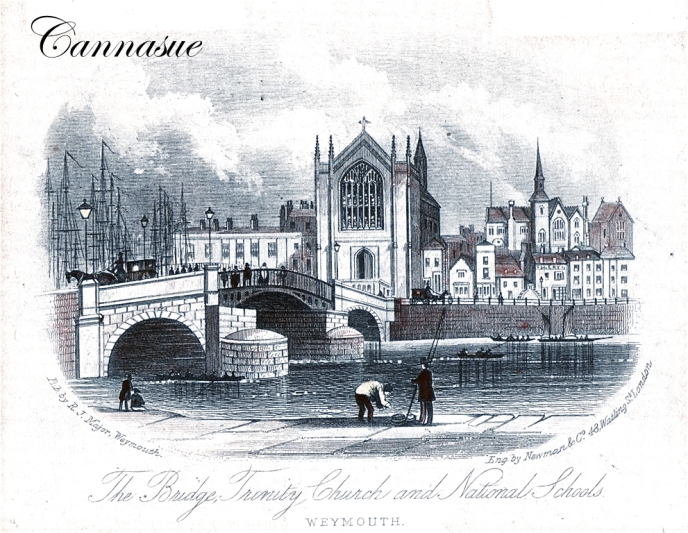
We stop first at no 10 High Street, here lives 45-year-old Charles Buck, a coal merchant.
Love and matrimony came late to Charles, at the ripe old age of 40 he finds himself waiting nervously at the alter of Holy Trinity church for his bride to be. On Christmas day of 1851, Rebecca Tompkins makes her way down the aisle towards her beloved. Man and wife were set for a long and happy future in a place they both loved. Sadly though, their match made in heaven didn’t last long, on the 11th November 1857, hard working coal man Charles, passed away, leaving a bereft Rebecca to carry on with other members of the Buck family as shown in the advertisement from 1883.

But carry the family certainly did, remaining in the High Street.
One can only assume that their coal business had been fairly healthy and Rebecca had been left reasonably well off, she was listed as a home owner and of independent means.
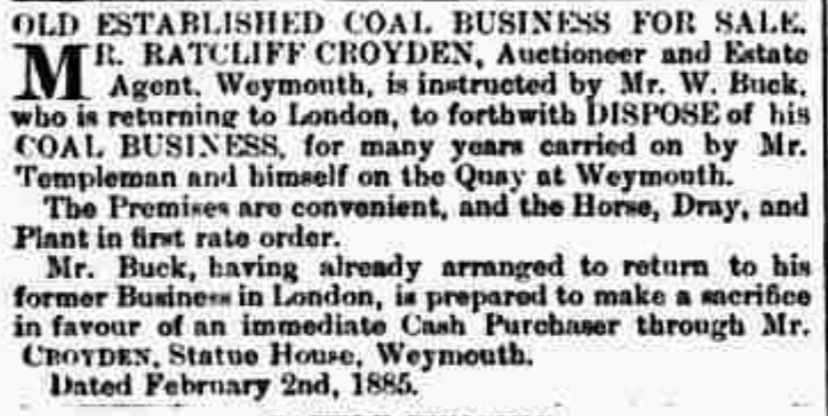
Rebecca died in 1891 at the age of 69.
*************
Moving on to no. 13, here in 1851 we find a newly married couple, Charles Hibbs and his wife Susan (nee Bond). Charles is earning his living as a plumber and glazier.

Having worked hard though and building up a thriving business, taking on more staff and broadening his customer base with offering extra services such as ‘coats of arms handsomely emblazoned’, just after 1857 the couple up sticks and move across the water to larger premises in St Thomas Street.
**************

No 15 is known as Longhill, the home of wealthy widow Mrs Phillis Horsford, a grand dame who has reached the ripe old age of 72. She was married to Joseph Horsford Esquire for many years, an extremely affluent and influential solicitor, business man and councillor in and around town. Joseph died in 1850 leaving his wife more than comfortably off.
Phillis now lives in her opulent home alone, barring her servants, a sure sign that she was certainly no pauper, and perhaps demonstrates that parts of the old High Street undoubtedly had some very desirable residences indeed.
The start of 1856, and Phillis breathes her last. In her will, besides many other items of value, she leaves to her only grandson her
‘silver salver and six silver forks.’
The rest of her estate is put up for auction, no doubt many of her curious neighbours and acquaintances took this opportunity to have a wander through her house and poke through what was once her precious belongings.
An advert placed in the local paper gives a tantalising peep into her home of accumulated wealth. Paintings adorn her walls, many by acclaimed artists such as Thorne, Collier and even Gainsborough. Her grand rooms are filled with sumptuous furniture, items such as an ornately carved sofa, richly gilded and covered in striking silk satin, one being an item that belonged to no less than George III himself when he resided in Gloucester Lodge, the contents of which were auctioned off in 1853.
Josephs extensive library is being sold off too, including
‘a large number of works suitable for an attorney’s library,’
something which gives us a clue into Master Horsford’s working and social world and the source of his wealth.
But death favours no one, rich or poor, at the end of the day, no matter how wealthy they may have been, how high they flew in society’s social circles…they all end up in a 6 foot hole in the ground.
**************
Stroll a little further down the road and we arrive at the home of Joseph Balson and Sarah who live at no 18. Sarah was a bit of a cougar!…She was 44, nine years older than her husband.
The pair run their own grocery business, one of the many bustling little shops that serve this area.
********************
At no 19, lives Edward Bartlett, an ex-employee of the HM Coastguard Service. His life was spent pursuing smugglers and pirates on the seas around our coastline. Edward’s a retired Captain of a revenue cutter. Edward married Grace White Stanford on the 27th August 1850, this was love second time around for both of them. Not surprisingly, the couple have chosen to set up home near to the waters edge, a mariner never likes to venture very far from those sights, sounds and scents that remind him of his life on the sea.
Edward dies in 1856 at the age of 75, but during his lifetime he has obviously acquired a very good standard of living, including, it seems, a healthy stock of liquor. In his Last Will and Testament he leaves the majority of it to his wife and her daughter Susannah. besides a considerable amount of money. He goes on to declare that
“I give and bequeath to my wife the said Grace White Bartlett absolutely all the household goods and furniture pictures, prints, books, plate silver,….. glass, wines, liqueurs and provisions, watches, chains,….and effects which shall at my death be in and about the dwelling house or the outbuildings and premises wherefore I now reside being no 19 High Street Weymouth…”
He also leaves Grace his
“premises situate in Wellington Place, Weymouth.”
By the time of the next census, 1861, Grace is still resident in the High Street, living with her unmarried daughter Susannah, who earns her own living as a “teacher of music and dance.”
Grace is rather grandly referred to as a “landed proprietress.”
*******************
At no 20 lives Mrs Charlotte Bussell, wife of John, a local seaman who’s more often than not away from home. That’s not a problem for Charlotte, she is an independent woman who earns her own living as a straw hat maker. Her beautiful bonnets and colourful chapeaux adorn the heads of many a fashionable lady walking the streets of Weymouth. But of course Charlotte is only too aware that she needs to keep up with the latest fashions. With the invention of mass produced hat pins women were moving away from the all-encompassing fabric bonnets and taking up wearing little straw hats perched at a jaunty angle to show off and flatter their delicate features.
Come the summer months and Charlotte’s nimble fingers are kept occupied with the arrival of the Dorset Yeomen and their social following, the elite yachting regattas, and fashionable horse racing at Lodmoor. Weymouth’s social season dictates every lady needs to look her best.
Even in 1871, at the ripe old age of 73, Charlotte is still busy plying her trade as a hat maker to the women of the town.
It’s not until 1876 that Charlotte hangs up her ribbons and bows, drapes her final bit of lace, and lays down her fine feathers, her final hat finished. She was buried in Wyke Regis churchyard at the age of 81.
******************
Next door to Charlotte’s shop, (at no 21) resides Mrs Mary H Comben. Whats more fascinating, a Comben that has escaped from the isle of Portland. (You have to be local to get that one!) Mary is another widow having reached the ripe old age of 76. She too is wealthy enough to be living off her own means and lucky enough to have a retinue of servants in the house.
(There must surely be something in this sea bathing malarky and fresh air theory, for Weymouth can certainly boast many persons of a good age.)
*******************
A retired Master mariner lives at no 22. This is 86-year-old William Langrish. With him is wife of 54 years, Grace Fowler, (nee Flew,) the couple were married at Wyke church way back in 1797.
Sadly, they are not destined to live out their lives in their home of many years. William and Grace, no longer in the first flush of youth reluctantly move away from Weymouth and all her comforting coastal beauty to live with one of their sons in dusty old London town, and here they both die, far away from the soothing sounds and smells of the sea.
*****************
Again, we jump a few numbers to reach no 38, the home of George Notley and Agnes along with their rather extensive brood. George was an incomer (as were many of the other residents much to my surprise, Victorians seemingly moved around as much as todays population.)
George started out life in Haydon, but moved his business to Weymouth. A wise man goes where there’s money to be made, and with the coming of the railways, Weymouth was burgeoning as a popular seaside resort. George was kept busy as the local baker and corn dealer. He also ran a farm and another business in Wyke Regis.
The year 1863 was an unfortunate one for George.
In January, one of his apprentices, Alfred Caines, was driving the baker’s horse and cart through Broadwey. The cart’s shaft came in contact with a Mr John Windsor who was crossing the road and knocked him to the floor. Alfred stepped down from his seat to help the gentleman but he insisted he was fine and made his own way home.
Not long after he deteriorated and Dr Pridham was summonsed. John Windsor died later that evening. At his post mortem it was discovered that
‘the whole of the tissue internally, corresponding with the external mark, were reduced to a pulpy condition.’
A verdict was returned of ‘Accidental death.’
Later, in April baker George got himself into a bit of bother, charged with
‘violation of the bye laws of the Board of Health.’
His heinous crime was to leave a somewhat sizeable steaming heap of manure on the North Quay, much to the annoyance of his neighbours. He had been ordered to move it but for the life of him poor old George didn’t know where to. For his sins he was fined 1 shilling.
Come 1867 and things have taken a downturn. George files for bankruptcy. Though from the reports one has to wonder if they did some shenanigans. In court George claimed he managed the farming side of the business, while his wife ran the bakery.

These matters didn’t seem to stop Mrs Notley and her daughters though, in that December they were attending a grand ball held at the Burdon Hotel Assembly Rooms by officers of the 13th Regt.
By 1871 the Notleys are letting rooms above their premises in May’s edition of the Southern Times & Dorset County Herald. This of course was in preparation for the arrival in town of the Queen’s Own Dorset Yeomen. The afore said sitting and bedroom came with a
‘two-horse stable and coach house.’
Not too shabby then! But of course it was very much a case of making hay while the sun shone.
Accidents, horse dung and money problems aside, George and his wife carry on with trade successfully in High Street until his death in 1877, but stoic Agnes maintains the family business, working as a baker alongside other members of her family.
***************
Another incomer to Weymouth High Street is 54-year-old Samuel Penny (a Sherbourne lad) who is installed at no 42. Samuel is another shop keeper, but he’s no ordinary grocer, Samuel deals in speciality wines and spirits keeping the cut glass decanters of Weymouth’s elite well topped up. Oh, and besides that he stocks a few rather odd items too…as we can see from his advert of 1847.
Lump salt probably isn’t that strange an item to find in a grocers…but 20 tons of manure, I wonder where he stored and displayed that? (Maybe he’d sold to to George Notley!)
Living and working along side him in their bustling store is his wife Kezia and their children, everyone had a role to play right down to the youngest. The Penny’s have been successfully trading here for a long time, they have lived and traded in this street for at least 15 years, another family that socialised with those of the more wealthy Weymouth residents.
Samuel died in 1870 and his widow Kezia followed soon after in 1872.
****************

Their neighbours at no 43 are a family I already know a little bit about because one of their sons crops up in a piece of previous research. They are the Tomkins family, Robert and Eliza and their children. Dad Robert trades as a shoe maker, but his son, Joseph Russel Tomkins, was destined for higher things. He started out life as a lowly carpenter, but went on to become a builder with his own business through hard work and diligence. Joseph later became an eminent Weymouth fellow and reached the great heights in his career as a Judge, then he moved his family to London. But Joseph never lost his love for his place of birth, he became a member of the Society of Dorset Men and wrote many an articles for them. (this is an actual likeness of Joseph in his twilight years.)
***************
We find another bakery shop at no 48, this time run by Robert and Catherine Cox, they are both of a good age, 67 and 63 respectively.
By the time of the 1861 census they have moved their business over onto Portland where they could be found running their bakery in Easton. Robert is a hearty 75! In the 1800’s there was no safety net of state help or a pension to look forwards to, if you didn’t have a pot of money put by for your old age, you relied on family to look after you, that or you literally worked until you dropped. For the less fortunate, some found themselves ensconced in the last place the’d ever want to be, the dreaded workhouse, separated from loved ones, with the only way out being feet first in a wooden box!
*************
No 36 is a house of multiple occupancy…and a mystery.
One of its tenants is 26 year-old William Henry Latty who elegantly coifs and curls hair of Weymouth’s elite. By 1851, despite his tender age, William it seems has 2 children under the age of 2, two-year-old Jane Susannah and her baby brother, 6-month-old William… and not a whiff of a wife.
Living with him, but down as his housekeeper, is Amelia Escott along with her 4-year-old son George.
Both are marked on the census as unmarried.
We discover that in fact 2-year-old Jane Susannah (who is actually an Escott and not a Latty) was christened in 1848 over in Melcombe Regis, she is the daughter of Amelia Escott…
‘a single woman.’
Later, in 1850, little William is also christened over in Melcombe Regis, far away from prying eyes and gossip maybe? his parents of course are William and Amelia.
William and Amelia finally decide to place their relationship on a legal footing, maybe there are good reasons why they couldn’t do so before. The couple are married in 1856, but their certificate also reveals some further facts. William claims to be a bachelor, and Amelia a spinster.
Come the next census and the family are all living together along with quite a few additional siblings and still running their hairdressers in the High Street, by now son George is training at his fathers side.
The hair coiffing family then moved over onto Fortune’s Well, Portland, espying the opportunity of a roaring trade from the newly installed military in the Verne Citadel and their followers. (Portland had become a thriving island while these works were being completed.) Unfortunately for the Latty’s it hadn’t been such a wise move, in 1879 William Henry was filing for bankruptcy,
By 1901 the couple have moved and set up shop near Birmingham, a far cry from the softly spoken folk of Weymouth town, but they are soon lured back to their native home, and safely ensconced at Melbourne House in Lennox Street.
***********
John Sergeant, 53, a married school master can be found at no 49. John is a pillar of the community, he not only runs a school in the nearby Town Hall, but has also been assistant overseer for the parish for many years and recently appointed as collector of the poor rates.
Despite all the outward appearance of respectability and the good life, in May of 1855 the High Street is agog with horror and scandal concerning poor old John. An unsuspecting lodger in his house awoke one morning and on coming downstairs discovers the front door wide open and the doorstep covered in blood. Upon entering the closet he finds yet more blood splattered around the walls and floors, in amongst the congealing blood there lies a tarnished knife. Fearing the worst he calls for his wife and then dashes off to get help. Having gathered a large search party, they then proceeds to look for the injured victim. A trail of bloody footsteps lead them first down through the garden, but this soon peters out…where should they look next?
By now everyone in the area is searching for John…or his remains. Suddenly someone espies dark tell tale hand prints smeared across and down the harbour wall, so the desperate hunt moves down to the harbour. As the waters slowly lower with the outgoing tide, it doesn’t take long to spot the still blood soaked footprints in the exposed mud, they are heading straight for the deep water channel, about 30 yards from the wall.
Men spend the next few hours dragging the waters for a body, but to no avail. Nobody or nothing is found. It’s not until later that afternoon that the corpse of John Sergeant is discovered laying in the mud, having been carried on the incoming tide a mile further upstream from where he first entered the water.
His body is removed to the Albert Hotel, where it is held for his inquest. As per usual, the eager Victorian reporter describes the gruesome scene in all its full glory,
“the Jury proceeded to view the body, which was placed in the bowling-alley, and presented a most ghastly spectacle, the front of the dress being saturated with blood, which had flowed from a deep wound in the throat of about three inches in length, the edges being jagged and mangled in a manner that showed the desperate earnestness with which the unfortunate man had set about his self-destruction.”
What ever reasons lay behind John’s impulsive decision to end his life, we will never know. His somewhat erratic actions over the two week period prior to his untimely death had led a close friend recommending to his wife that he should see a doctor. But he didn’t. Consequently, John carried his dark secrets with him to his unhallowed grave.
*************
The house of no 59 is home to William and Catherine Dennis along with their family. William is employed to keep a beady eye on those pesky traders around town, forever trying to diddle their customers to line their own pockets. William is an Inspector of Weights and Measures.
(You might well imagine that people aren’t too bothered about such things in the Victorian times, but there have been standards, statutes and laws for Weights and Measures for well over a 1000 years.)
In the 1850’s a 4 1/2 lb loaf is selling for on average 6 1/2d to 7d, but the wily bakers often try every means in the book to squeeze more profit out of their wares. A tad underweight on each loaf maybe? Perhaps, but they can (and frequently did) far worse, going as far as to cut the flour with other less salubrious and often downright dangerous ingredients.
In the bakers loaves you could find many suspect ingredients, plaster of paris, bean flour, chalk, or far worse, alum, which was frequently used to whiten the bread. It was also a substance which could have lethal effects on the digestive system, particularly dangerous and sometimes even deadly for young children and the elderly.
I hope that bakers Robert and Catherine Cox just down the road at no 48 were on their guard…and not trying to diddle, (or poison,) their customers.
****************
Next port of call is the Boot, one of Weymouth’s oldest pubs, and a part of the original historic High Street that still remains. Not surprisingly it has a long and fascinating history, with many tales to tell of smugglers and preventative men, sailors and merchants. Spectres of long ago walk these rooms, beguiling modern day ghost hunters,
In 1855 it is being run by 51-year-old George Gulliver and Ann. The couple have been hosts for a many years, they were there in the 1851 census and are still there in the 1861 census.
One of the few remaining buildings from Weymouth old High Street, this atmospheric pub is still as popular as ever today, it even holds the dubious title of the most haunted pub in the area with numerous ghostly goings on, many a ghoul gliding through its historic rooms.
****************
Their neighbours at no 64 are Charles and Elizabeth Denning. The couple run the greengrocers and a beerhouse and have done so in this street for the past 15 odd years.
Like most people who run a successful business, there is always someone who tries to take advantage. Such was the case in 1850, when one of Charles’ employees helped himself to 24 shillings. Having been caught in the act and stood before the magistrate, William Hawkins suddenly found himself bound for pastures anew…his sentence? 14 years transportation.
A few years on and Charles falls foul of the wily Hawkins family again. In 1863, pipe maker and persistent petty pilferer, Daniel Hawkins, comes before the courts up on a charge of obtaining goods by false pretences, that being a loaf of bread, a piece of pork, some cheese, and six eggs. Despite this being his umpteenth appearance before the magistrates, his fate is certainly less harsh than that of his predecessor, he received 3 months hard labour.
Grocer Charles lost his wife of 20 years, Elizabeth, in 1863, but with the help of his family he maintained the shop until his death in 1875.
The year after his death, his once thriving business goes into liquidation.
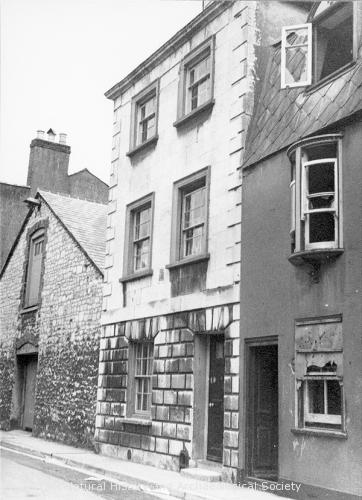
***************
Moving along to the premises of no 92 High Street, here we find a recently married young couple, 26-year-old Edward Samways and his wife Martha. Edward started out life in nearby New Town Place, that is until his marriage, then once married the couple set up home together in the High Street where Edward plies his trade as a cordwainer or shoemaker. He also works as a letter carrier, I guess his established profession alone wasn’t enough to keep the wolves from the family door.

***************
A later edition to the street, but one that might be remembered by old Weymouthians is the Fishermans Arms. It once stood at the east end of the street towards Trinity church. In all probability this quaint building started out life in the 18th c as a pretty Georgian town house, a home to one of Weymouth’s merchants or wealthier residents.

In 1856 it was run by John Cooper. Not surprisingly harbourside based it’s patron’s could be of a somewhat lively nature. This was the case in 1856. A certain notorious tramp George Hodger had entered the pub and become abusive. John tried to evict him but fared worse in the fight, finding himself flat on the floor with Hodger’s arm tightly clamped around his throat, Hodger’s free hand was also clasping tight the hair of two women who had come to John’s defence. Hodge’s response in court was that he swore Cooper
‘kept a bawdy house.’
*********
Thankfully there are a few remnants of the High Street still standing and one is the old Town Hall which all credit due to an enthusiastic band of volunteers has undergone a complete revival over the past few years.
Hopefully Weymouth will continue to give rise to folks interested in her long history and love for her old buildings. People who will fight to preserve what’s left and teach others to appreciate it, because as we have so often learnt from past mistakes, once it’s gone…it’s gone!
That’s the end of our little virtual stroll, who knows, maybe you spotted one of your ancestor’s there?
******************
Time has marched on since I penned this post and concerned Weymouth residents again find themselves having to fight to make sure that we preserve the archaeological records of this historic area of town. Below is the link that takes you to a page that joins together those who want to make sure that no further building work is done until a dig of the High Street area is completed and overbuilt with whatever is deemed worthy of going there. It’s run by Mark Vine author of Crabchurch Conspiracy and Civil War expert that knows every inch of this area.

*********
If you enjoy stories about Weymouth and Melcombe Regis of of old why not try Nothe Fort and Beyond-In Defence of Weymouth and Portland.
Don’t worry it’s not just a dry, dusty, boring old military history book, it contains many stories of Weymouth families, a good old gossip about those whose lives became entwined in one way or another with soldiers and their families who lived atop the Nothe, albeit through death or disaster, murder or marriage.
Life was certainly never going to be dull with the military in town.
It’s now available at the Nothe Fort bookshop and Weymouth Museum bookshop or on Amazon at

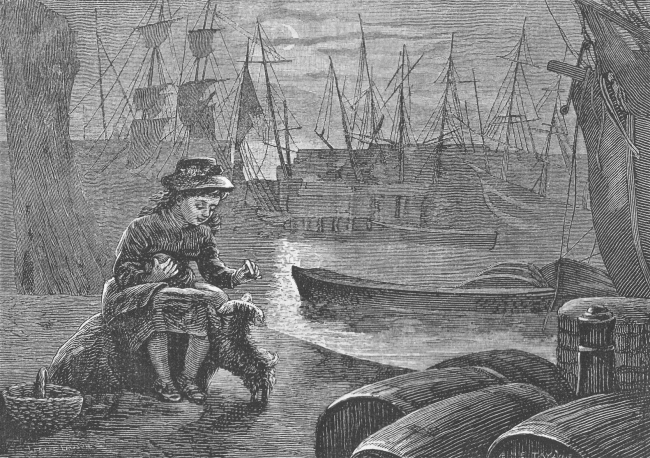
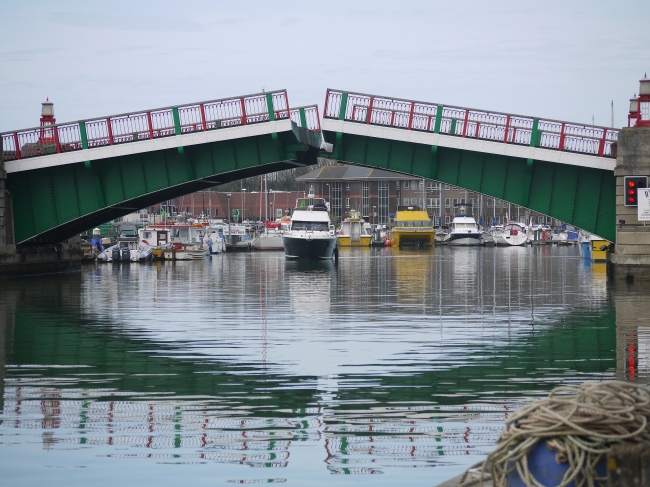



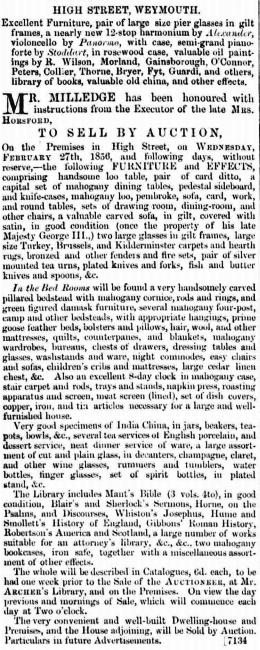





love looking back, my paternal great grandparents were bakers on adjoining building to the boot pub
LikeLike
Love to hear from people who recognise their ancestors and places in these tales.
LikeLike
Fascinating piece of history – my great grandparents lived at No 18 High Street for many years. My Grandfather was born there too.
LikeLike
Am i right in thinking that part your family moved to the Channel Islands Adrian at some stage? I seem to recall one of you pieces talked about an ancestor of yours doing that.
LikeLike
That’s right Sue – My Grandfather, Charlie Pavey, (born in High Street), worked on the boats, mostly Channel Island ferries and Cargo steamers. He must have fallen for my Grandmother (A Jersey girl from a well established Jersey family) on one of his visits and moved to the Island once they were married. My Dad and his brother and sister were all born in Jersey, but they all moved back to Weymouth in the 1940 evacutaion and settled in Westham after WW2.
LikeLike
Enjoying these pages! Makes me want to come for a visit!
LikeLike